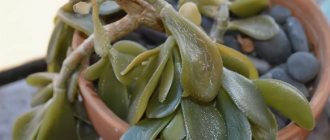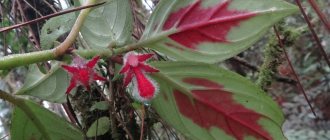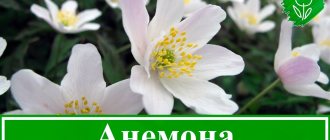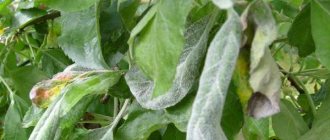Since ancient times, fireweed has been taken as a remedy to get rid of many diseases. Fireweed, or Koporye tea, is famous for its beneficial properties, since this medicinal plant has practically no contraindications. It grows throughout Russia, but most of all it can be seen in Siberia and the Far East. Herb Ivan tea: medicinal properties and contraindications, how to brew the drink correctly, and in the fight against which ailments it should be included in the mandatory diet - we will answer all these questions in this article.
The popularity of fireweed tea is ensured not only by its unusual floral aroma with fruity-honey notes and extraordinary taste, but also by a huge number of beneficial properties
Features of culture
This perennial has many names. In botany it is designated as fireweed; more than 60 popular names are known.
- Ivan-tea loves the sun, but does not tolerate prolonged drought and heat. The result of growing fireweed in dry areas is weak and low shoots.
- Fireweed prefers places of former fires.
- Plants dug up in open areas grow better and faster than those brought from the forest.
- Young shoots develop slowly. It gains strength and blooms in an average of 2 years.
- The population is capable of growing for 5-7 years. After this period, sowing will be required in a new place.
Side effects
Care should be taken when preparing fireweed infusion. For example, if you drink a lot of tea, its beneficial properties can negatively affect the body. As a rule, the gastrointestinal system is affected first. Therefore, serious illnesses are not recommended to be treated with this herb. An infusion of this tea is also contraindicated for children under six years of age and pregnant women.
It is important not to forget that fireweed decoction and tea when brewed in a teapot can contain varying concentrations of beneficial substances. Also, you should not take the decoction for a long time so that it does not have a negative effect on the human body.
In case of thrombosis and poor blood clotting, drinking fireweed drink is contraindicated.
How to collect
Fireweed seeds are collected after the plants flower. Ivan tea blooms until the end of August, after which 2 months should pass.
The specific fluff is removed from the collected seeds. The seed material is dried and left until next spring, in a cool place protected from light.
If you plan to use the roots, then dig them up in advance (in spring or autumn). It will be easier to work in the fall (in the spring the soil is swollen and difficult to shovel).
It must be remembered that fireweed has a bushy root system (up to 1.5 m). The rhizomes are taken along with a lump of earth (which will ensure better survival rate). Depending on the size, large roots are divided into more convenient fragments (up to 10 cm).
Types and varieties
The fireweed genus has about 220 species. Fourteen varieties of the plant grow in our country. Popular types include:
Fireweed (Chamaenerion angustifolium)
A perennial crop with an erect, slightly branched stem, which is densely covered with lanceolate leaves, randomly arranged along the stem. The length of the dark green leaves varies from 4 to 11 cm, the width is no more than 2 cm. In mid-summer, fireweed blooms with pink flowers, the diameter of which is 3 cm. The flowers are collected in a loose panicle at the top of the plant. By the end of summer the seeds ripen.
Hairy fireweed (Epilóbium hirsutum)
An erect, branched perennial 150 cm high. The entire surface of the shoot is covered with thin, long glandular hairs located perpendicular to the stem. The lanceolate leaves are pubescent on both sides, with teeth along the edges. Single flowers bloom in the axils of the leaves at the top of the plant. The diameter of the flower cup is 2-2.5 cm, it looks like a cut bell. The color of the flower is lilac or dark pink.
Broadleaf fireweed (Chamaenerion latifolium)
The natural habitat of this species is the Arctic and subarctic zone. The height of the plant does not exceed 70 cm. The broadly oval leaves, the maximum length of which is 10 cm, are slightly pubescent. Racemose inflorescences consist of dark pink flowers. Fireweed blooms in August.
Alpine fireweed (Epilóbium alpinum)
A low-growing herbaceous plant, the height of which varies from 3 to 10 cm. Broadly lanceolate leaves are alternately located on thread-like unbranched stems. The flowers are small, pink in color.
Swamp fireweed (Epilóbium palustre)
Perennial 80 cm high with opposite sessile leaves 2-9 cm long. Flowers are small, pink or white. Blooms for three months: July – September.
Small-flowered fireweed (Epilóbium parviflorum)
The average height of the plant is 60 cm. Small pink flowers, 1.5 cm in diameter. The perennial blooms at the end of June.
Fireweed "Glaberrimum" (Epilóbium glaberrimum)
A low-growing species of fireweed that grows in the mountains. The pubescent shoots spread like a carpet along the ground. The height of the stems varies from 10 to 90 cm. The arcuate leaves are arranged oppositely, their color is blue-green. The plant blooms with red, pink or white flowers from June to August.
Fireweed (Epilóbium glandulosum)
Low perennial with small white-pink flowers. Glandular hairs cover the ovaries and fruits.
Fireweed tea "Fleischer" (Chamaenerion fleischeri)
The plant is 45 cm high with a thick rhizome and numerous stems. Linear, pointed leaves densely cover the stem. Bright pink flowers bloom in June.
Fireweed tea "Dodeneya" (Chamaenerion dodonaei)
Perennial 30-90 cm high, growing in meadows and river banks. A single stem has almost no branches. Leaves are glabrous, lanceolate. The flowers are pink or white.
Caucasian fireweed (Chamaenerion caucasicum)
A beautiful decorative perennial, the average height of which is 50 cm. The width of the lanceolate-linear leaves is 1 cm, length 3 cm.
How to prepare seeds
Preparation for planting fireweed is carried out in one of three ways:
- seedlings;
- mixed with wet sand;
- on strips of paper.
The last two options help not to lose the material - otherwise it could be scattered by gusts of wind or washed away during rains. The time to plant fireweed seeds depends on the method chosen.
Scheme for growing seedlings:
- you will need a small box;
- a soil mixture is prepared (sand, peat and humus in equal proportions);
- the box is filled with the prepared mixture, shallow grooves are made in the top layer;
- seeds are sown in depressions and moistened with a spray bottle;
- plantings are covered with glass (film) on top, the room temperature is maintained within 18-25 C0.
The first shoots will appear in 4-5 days. After two true leaves bloom on the young plants, picking is carried out. Before planting, the seedlings are hardened off for 3-5 days.
If the seed material will be attached to a paper base: cut strips (2 cm wide) from newspaper or toilet paper. Then, every 7-10 cm, a natural paste is applied (in small drops). The seeds are carefully attached to the prepared adhesive layer.
How to dry leaves correctly
A traditional Koporye drink is prepared from dried leaves. The condition for creating plant raw materials for brewing is proper preparation. The grass goes through 4 stages of preparation: drying, rolling, fermentation, drying.
| Stage | Description |
| Drying | The leaves are laid out in a thin layer and left in the shade in a light draft for 24-48 hours. |
| Twisting | The dried leaves are rolled in a special way so that there is a hollow space inside the blanks. |
| Fermentation | An important stage that is responsible for the quality of raw materials. Fermentation is provoked by the use of oppression. To do this, the rolled sheets are placed in a suitable container, pressed down, and left to soak and release the juice. |
| Drying | After fermentation, the raw materials are dried in any convenient way. |
Information! The fermentation process lasts from 3 to 36 hours.
Sowing rules
Planting fireweed in open ground is carried out from the end of May to the first half of June.
Regardless of the chosen method, a number of conditions must be met.
The work is carried out in cloudy weather. The area where the population will grow needs to be dug in on all sides with a shovel. This method solves two problems:
- plantings are protected from the penetration of grasses and weeds;
- the culture itself will grow compactly and will not interfere with other garden plants.
You can further limit the growth of the plantation by digging iron sheets (or slate) around the perimeter. If possible, they are deepened to 1 meter.
Then they fertilize the ground with ash. In such conditions, fireweed will grow abundantly and well.
The field can be prepared using a more radical method. However, caution will be required when using fire. A prerequisite is calm, windless weather. First, they dig in the area (the width of the strip is at least 1 m). A fire is made from dry branches. As it burns, you can add peat, moss, and wood waste. The resulting coals are distributed over the area of the site. Then dry straw is poured on top. Slowly smoldering straw forms the necessary ash layer.
Additionally, you can add microbiological fertilizer (this will increase soil fertility).
If seeds are used (mixed with sand or on adhesive tape), then they are sown in rows (which will simplify future weeding). Planting depth – no more than 1 cm.
Planting with roots: holes are prepared (up to 15 cm deep). As with seeds, it is more convenient to plant in rows. Humus, sand and ash are mixed in small quantities, added to the recesses, and watered generously.
Divided or whole rhizomes go deeper into the soil. Watered again.
When young shoots appear, the area is covered with a layer of dry or mown grass (required thickness - 10 cm). Straw prevents moisture evaporation and improves fireweed growth.
Fireweed develops faster from roots than from seeds. A noticeable result will appear within a year.
Brief etymological note
Ivan tea has more than a dozen alternative names. Here are some of them (according to Annenkov's botanical dictionary): Virgin's grass, boron potion, kouprey, red flower, field levkonia, plakun, crayfish, script, willowherb, pineweed, tar, steppe, wild violet, mulberry, springberry, balnik, cockerel apples , wheatgrass.
Many names were formed due to the external identity of fireweed with other plants. For example, the name “willow grass” appeared due to the similarity of the leaves, and “fire grass” - due to the fact that the plant is the first to colonize fires. The names “creak” or “weeper” are also easily explained. When you try to pull a plant out of the soil, a specific sound occurs that is similar to a squeak. This occurs due to the friction of the human hand on the stem. The plant was also used for making flour - hence the names “breadbox” or “miller”. In Rus', Ivan tea was used not only in the gastronomic industry. Fireweed is nicknamed “wild hemp” because its stem produces about 15% fiber, like natural flax or hemp. Its stems were used to make fabric and make strong ropes. When fireweed blooms, an abundance of fluff is formed. Previously, cotton wool was made from this fluff, pillows or mattresses were stuffed with it, hence another name was formed - “down jacket”.
Recommendations
The plant is unpretentious and does not require special knowledge of how to care for it after sowing. But for normal development and growth, minimal care of fireweed is observed.
The first 2-3 weeks regularly check and maintain soil moisture.
Then they focus on the weather. In arid climates, water the area 1-2 times a week. If the climate is rainy, then limit yourself to watering once a month.
It is important that the area is not overgrown with weeds. Weeding is carried out periodically. The soil can be loosened, but not more than once a month.
Once a season, you can use mineral fertilizer.
In autumn, the plant prepares for wintering. To do this, its stems are trimmed: about 15 cm in height should remain from the roots.
Recipes for specific diseases
Infusions of fireweed leaves are recommended for treating and calming the nervous system, treating the reproductive system in women and men, and bleeding. Infusions are also used for headaches and insomnia.
Ivan tea for prostatitis.
To use the infusion for prostatitis and prostate adenoma, use the following recipe: 15 g of crushed medicinal raw materials (aerial and underground parts of the plant) are poured into 200 ml of boiling water and infused for 1 hour, after which the resulting infusion is filtered and taken 15 ml (1 tablespoon ) 3 times a day.
From otitis media, stomatitis and tonsillitis.
For external use of the infusion (for otitis, stomatitis and sore throat): 2 tablespoons of dry medicinal raw materials are poured with 400 ml of boiling water (it is better to use purified water) and infused for 6 hours, after which the resulting infusion is filtered and used as needed.
For diseases of the genitourinary system.
For use in various diseases of the genitourinary system, including chronic cystitis and inflammation of the ureters: 1 tablespoon of dry crushed raw materials (leaves) is poured into 200 ml of boiling water and left for two hours, then filtered into a clean container. Use 1/3 cup (50–60 ml) 3 times a day.
As a sedative.
To use the infusion as an analgesic and sedative (including for insomnia): 1 tablespoon of crushed raw materials (root with rhizome) is poured into 200 ml of boiling water and infused for 45 minutes, after which the resulting infusion is filtered into a clean and dry container. Take 15 ml (1 tablespoon) 3 times a day.
From alcoholism.
To reduce cravings for alcoholic beverages, as well as to restore the psyche after giving up alcohol, you need to drink Ivan tea mixed with dry thyme herb in a ratio of 5:1. When you feel the desire to drink an alcoholic drink, add honey to the tea and take 5-7 servings a day.
To reduce cravings for tobacco.
The psyche of a person who gives up cigarettes becomes more vulnerable to even the slightest irritants. In addition to increased nervousness, insomnia may occur. However, this is not a reason to start smoking again. It is enough to prepare an infusion of fireweed, which helps normalize the psyche.
Recipe:
- Mix 1 dessert spoon of Koporye tea and peppermint.
- Add 0.5 liters of boiling water and soak for 15 minutes in a water bath.
- Cool the drink and take 100 ml 5 times a day.
Ivan tea helps eliminate toxins, normalizes sleep, and calms the nervous system. Improvement can be noticed after 14-20 days of regular use.
Varieties
There are many photos of ordinary fireweed on the Internet, but it is more difficult to find a description of its types. The genus of this plant has similar characteristics, with minor differences in appearance.
Broad-leaved fireweed, common in the northern regions. Its leaves with rounded (or pointed) edges reach a size of 10 cm. The flowers are dark pink.
Narrow-leaved fireweed tea can grow up to 1.5-2 meters in height. It has a powerful root system and grows with straight stems.
Caucasian fireweed is distinguished by its small size (0.5 m in height) and creeping trunks.
Dodonea reaches 90 cm in height. It produces few branches and blooms with small flowers, white or pink.
Steven, blooms with elongated clusters, the leaves are narrow and practically devoid of hair.
Fleischer, grows up to 45 cm, blooms with pink flowers (bright or lilac shade), has thick roots.
Colchis fireweed is a mountain perennial that prefers higher elevations.
The land on which fireweed grows is additionally enriched with minerals, and the germination of other garden crops on it increases. The unpretentious plant tolerates common garden diseases well. For the owner, this is an opportunity to drink delicious tea, rich in vitamins, and the garden will be decorated with beautiful and bright flowers.
Composition of fireweed
Ivan tea is rich in beneficial elements that have a healing effect on the human body as a whole. It contains many vitamins, for example, C, B, P.
Thanks to this, fireweed preparations help increase immunity, improve the appearance of the skin, activate brain activity, and strengthen blood vessels and capillaries.
Contains fireweed and beta-carotene, pectin, lectin, tannins. It also contains microelements, such as:
- iron;
- copper;
- nickel;
- titanium;
- manganese;
- boron
Fireweed has a beneficial effect on the hematopoietic system, bones, kidneys, liver, and heart. In addition, it enhances the production of sex hormones.
The main advantage is that fireweed tea contains neither oxalic acid nor caffeine. The amount of nutrients in a plant can vary, as it depends on the time and place of collection of the herb, as well as on the method of its processing.
Photo of Ivan-tea (fireweed)
Alternative uses of the plant
Ivan tea gained its popularity thanks to the gastronomic industry. The drink made from its leaves was called “Koporo tea” and spread not only throughout Russia, but also in Europe. The tea was made by fermenting and drying the plant, just like traditional tea leaves. But this is not the only area of use of fireweed.
Honey production
The plant was used to feed large livestock. It was served both fresh and stylized. Fireweed showed itself best as a honey plant. This is a specific plant that bees visit to collect nectar, pollen and a special sticky substance from flowers. In the hive, these components are processed by bees into honey, propolis and bee bread. The productivity of the whole hive depends on the quality of the honey plant. The honey productivity of fireweed reaches 600 kilograms or more per hectare of land. As the plant ages, the efficiency of honey production gradually decreases and is reduced to a minimum. The nectar obtained from fireweed is dominated by glucose and fructose. The sugar content of honey depends not directly on the plant, but on weather conditions. Under conditions of average relative humidity and high temperature, the sugar content will be from 4 to 6 milligrams. In cool conditions and high humidity, the sugar level drops to 1-2 milligrams of sugar per flower. The structure of honey is watery-transparent with a barely noticeable greenish tint. The taste is specific, delicate and pleasant. The finished honey gradually crystallizes into large white grains. Ivan tea is considered the best honey plant among the herbaceous flora of forests.
Household and industrial use
Ivan-tea is suitable for consolidating soils, ravines, railway/highway embankments. Fireweed fluff, which is formed during the development of flowers, is suitable for stuffing pillows. Previously, scarves were knitted from fireweed fluff, and dense ropes were made from the fibers of the stems.
Herbal medicine (a branch of alternative medicine)
Fireweed was used to treat urological diseases. Austrian herbalist Maria Treben argued in 1983 that the most effective cure for prostate diseases is an extract from fireweed tea. She recommended preparing infusions and giving them to the patient. Treban argued that such herbal medicine saves from pathologies of any severity and does not cause allergies, complications or adverse reactions. This assumption has not found support in traditional medicine, so drug treatment still prevails over herbal medicine.
In folk medicine, cases of using willow tea for treatment have been recorded:
- gonorrhea;
- syphilis;
- migraine;
- otitis;
- stomach ulcers;
- tonsillitis;
- scrofula;
- epilepsy;
- alcoholic psychoses;
- anemia;
- malignant cancerous neoplasms.
Experimental medicine recognizes the only effect of fireweed - sedative. The plant really calms the central nervous system, relieves anxiety and harmonizes the human condition. Decoctions of angustifolia fireweed have an anticonvulsant effect, and their mechanism of action is compared to a mild narcotic.
Best materials of the month
- Coronaviruses: SARS-CoV-2 (COVID-19)
- Antibiotics for the prevention and treatment of COVID-19: how effective are they?
- The most common "office" diseases
- Does vodka kill coronavirus?
- How to stay alive on our roads?
The leaves and flowers of the plant were used for wound healing and anti-inflammatory purposes. Due to tannins and specific mucus, the leaves really softly enveloped the damaged tissue, removed irritation, disinfected and contributed to the rapid regeneration of damaged skin. Herbal medicine involves the use of fireweed tea to treat pathologies of the gastrointestinal tract and skin diseases. Herbalists believe that the plant blocks not only the effect, but also the cause of the disease.
Alternative medicine methods are not proven drug recommendations. In some cases, a decoction based on fireweed tea can aggravate the current health condition, provoke swelling, complications or additional inflammation in the body/on the body. In case of serious illnesses, it is necessary to consult a doctor and undergo a high-quality therapeutic course, and not do home herbal medicine.











